Lista de artículos publicados
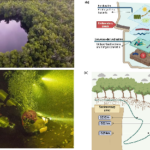
Exploring the microbial communities in coastal cenote and their hidden biotechnological potential
Perla A. Contreras-de la Rosa, Susana De la Torre-Zavala, Aileen O´Connor-Sánchez, Alejandra Prieto-Davó and Elsa B. Góngora-Castillo
03 Abril 2025
Bacterial secondary metabolites are crucial bioactive compounds with significant therapeutic potential, playing key roles in ecological processes and the discovery of novel antimicrobial agents and natural products. Cenotes, as extreme environments, harbour untapped microbial diversity and hold an interesting potential as sources of novel secondary metabolites. While research has focused on the fauna and flora of cenotes, the study of their microbial communities and their biosynthetic capabilities remains limited. Advances in metagenomics and genome sequencing have greatly improved the capacity to explore these communities and their metabolites. In this study, we analysed the microbial diversity and biotechnological potential of micro-organisms inhabiting sediments from a coastal cenote. Metagenomic analyses revealed a rich diversity of bacterial and archaeal communities, containing several novel biosynthetic gene clusters (BGCs) linked to secondary metabolite production. Notably, polyketide synthase BGCs, including those encoding ladderanes and aryl-polyenes, were identified. Bioinformatics analyses of these pathways suggest the presence of compounds with potential industrial and pharmaceutical applications. These findings highlight the biotechnological value of cenotes as reservoirs of secondary metabolites. The study and conservation of these ecosystems are essential to facilitate the discovery of new bioactive compounds that could benefit various industries.
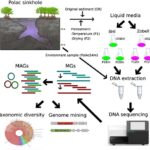
Biosynthetic potential of the sediment microbial subcommunities of an unexplored karst ecosystem and its ecological implications
Pablo Suárez-Moo, Alejandra Prieto-Davó
Abril 2024
Microbial communities from various environments have been studied in the quest for new natural products with a broad range of applications in medicine and biotechnology. We employed an enrichment method and genome mining tools to examine the biosynthetic potential of microbial communities in the sediments of a coastal sinkhole within the karst ecosystem of the Yucatán Peninsula, Mexico. Our investigation led to the detection of 203 biosynthetic gene clusters (BGCs) and 55 secondary metabolites (SMs) within 35 high-quality metagenome-assembled genomes (MAGs) derived from these subcommunities. The most abundant types of BGCs were Terpene, Nonribosomal peptide-synthetase, and Type III polyketide synthase. Some of the in silico identified BGCs and SMs have been previously reported to exhibit biological activities against pathogenic bacteria and fungi. Others could play significant roles in the sinkhole ecosystem, such as iron solubilization and osmotic stress protection. Interestingly, 75% of the BGCs showed no sequence homology with bacterial BGCs previously reported in the MiBIG database. This suggests that the microbial communities in this environment could be an untapped source of genes encoding novel specialized compounds. The majority of the BGCs were identified in pathways found in the genus Virgibacillus, followed by Sporosarcina, Siminovitchia, Rhodococcus, and Halomonas. The latter, along with Paraclostridium and Lysinibacillus, had the highest number of identified BGC types. This study offers fresh insights into the potential ecological role of SMs from sediment microbial communities in an unexplored environment, underscoring their value as a source of novel natural products.
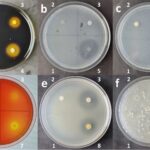
Diversity and Bioprospection of Gram-positive Bacteria Derived from a Mayan Sinkhole
Julian L. Wissner, José Carlos Parada-Fabián, Norma Angélica Márquez-Velázquez, Wendy Escobedo-Hinojosa, Susana P. Gaudêncio & Alejandra Prieto-Davó
29 Mayo 2024
Water-filled sinkholes known locally as cenotes, found on the Yucatán Peninsula, have remarkable biodiversity. The primary objective of this study was to explore the biotechnological potential of Gram-positive cultivable bacteria obtained from sediment samples collected at the coastal cenote Pol-Ac in Yucatán, Mexico. Specifically, the investigation aimed to assess production of hydrolytic enzymes and antimicrobial compounds. 16 S rRNA gene sequencing led to the identification of 49 Gram-positive bacterial isolates belonging to the phyla Bacillota (n = 29) and Actinomycetota (n = 20) divided into the common genera Bacillus and Streptomyces, as well as the genera Virgibacillus, Halobacillus, Metabacillus, Solibacillus, Neobacillus, Rossellomorea, Nocardiopsis and Corynebacterium. With growth at 55ºC, 21 of the 49 strains were classified as moderately thermotolerant. All strains were classified as halotolerant and 24 were dependent on marine water for growth. Screening for six extracellular hydrolytic enzymes revealed gelatinase, amylase, lipase, cellulase, protease and chitinase activities in 93.9%, 67.3%, 63.3%, 59.2%, 59.2% and 38.8%, of isolated strains, respectively. The genes for polyketide synthases type I, were detected in 24 of the strains. Of 18 strains that achieved > 25% inhibition of growth in the bacterial pathogen Staphylococcus aureus ATCC 6538, 4 also inhibited growth in Escherichia coli ATCC 35,218. Isolates Streptomyces sp. NCA_378 and Bacillus sp. NCA_374 demonstrated 50–75% growth inhibition against at least one of the two pathogens tested, along with significant enzymatic activity across all six extracellular enzymes. This is the first comprehensive report on the biotechnological potential of Gram-positive bacteria isolated from sediments in the cenotes of the Yucatán Peninsula.
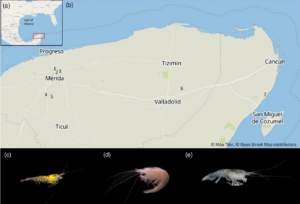
LINKING RADIOCARBON AND TROPHIC WEBS IN KARSTIC GROUNDWATER ECOSYSTEMS IN THE YUCATAN PENINSULA, MÉXICO
C Solís, E M Chávez-Solís, M Rodríguez-Ceja, C G Méndez-García, E Ortíz, C Canto, M A Martínez-Carrillo y M Mascaró
17 de enero 2023
Stable isotopes have been used historically to track food webs. Our approach used a combination of δ13C and radiocarbon (14C) dating to identify carbon sources in cave shrimp within caves of the Karstic Yucatan Peninsula, Mexico. Three sister species of stygobitic Typhlatya shrimps were collected from the cenote pool (cenote hereafter), cavern and cave hydro regions. New and previously reported 14C and δ13C values of whole tissues from the organisms were determined at the AMS laboratory (LEMA) of the Institute of Physics of the Universidad Nacional Autónoma de México. This new set of isotopic values of biomass and potential sources were incorporated into the Bayesian Mixing Modeling Software SIAR. In two hypothetical scenarios, the contribution from each feeding source among three species of the Typhlatya genus was determined. Slight differences were also observed between isotopic values of two groups of the same species collected in two distant cenote pools, suggesting this species may feed on a wider array of sources than previously found, and that the oligotrophic environment may have a strong influence on cave shrimp diet.
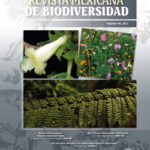
Morfología del aparato de alimentación de los camarones de cueva del género Typhlatya (Decapoda: Atyidae) de la península de Yucatán y comparación con especies epigeas
Ivonne Trejo-Ventura, Gema Armendáriz, José Luis Villalobos, Fernando Álvarez
24 de mayo 2023
A través de micrografías obtenidas del MEB se estudió el arreglo de las cerdas en el dactilo y propodio de los pereiópodos 1 y 2, definido aquí como el aparato de alimentación, de 3 especies de camarones de cueva del género Typhlatya (T. mitchelli, T. pearsei, T.dzilamensis) de la península de Yucatán. Las setas se clasificaron de acuerdo con su morfología y posición en el propodio y dactilo resultando 6 tipos principales. Las 3 especies de Typhlatya difirieron ligeramente en el número de cada tipo de seta y mostraron algunas variaciones morfológicas, especialmente en las setas centrales. Una comparación del arreglo setal de Typhlatya spp. con el de las especies epigeas Potimirim mexicana y P. glabra, mostró diferencias importantes generadas probablemente por la especialización a un determinado hábitat.
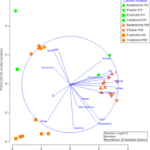
Use of Microbiological and Chemical Data to Evaluate the Effects of Tourism on Water Quality in Karstic Cenotes in Yucatan
Flor Arcega-Cabrera, Karina León-Aguirre, Fernando Enseñat-Soberanis, Germán Giácoman-Vallejos, Gabriela Rodríguez-Fuentes, Ismael Oceguera-Vargas, Elizabeth Lamas-Cosío & Nuno Simoes
23 de Junio 2023
Cenotes are spectacular karst formations in Yucatan, Mexico, often used for recreation. However, their impact on water quality has yet to be explored in detail. Therefore, during Easter, water samples were collected from four cenotes to identify variations in water quality associated with the presence of tourists. PCO of water quality, before (PH) and during Holy Week (HW) in 2019, explained 49.02% of the total variation. The indicators contributing to the first principal coordinate’s variation were Sr, K, sulfate, and chloride (0.89). Whereas, alkalinity, temperature, conductivity, nitrate, and ORP contributed to the second PC. PERMANOVA indicated a significant interaction between “cenote” and “condition” factors, and post hoc paired comparisons indicated significant differences between PH and HW conditions. Significant correlations varied among the four cenotes as the result of hydrogeological differences. Whereas, numbers of visitors were correlated with at least one fecal-matter indicator, demonstrating anthropogenic influence on the cenotes’ water quality.
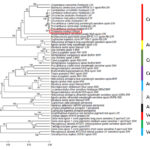
Extravisual opsins in the blind shrimp Creaseria morleyi: presence and expression
José R. Pérez-Calderón, Jorge A. Pérez-León, Nuno Simões, Marisela Aguirre-Ramírez, Roxana E. Malpica-Calderón, Alejandro Botello
10 de Noviembre 2023
The presence of a long-wavelength sensitive (LWS) opsin gene was demonstrated in the stygobitic crustacean Creaseria morleyi (Creaser, 1936) by PCR readings from genomic DNA. In order to find the expression of this gene in extraocular tissue, shrimps were collected and placed in a tank to expose them to light/dark conditions for a period of 72 hours, and immediately after, sacrificed and sampled for RNA in the eyes, cephalothorax, abdomen, and sixth abdominal segment plus uropods. The transcripts of the LWS opsin gene were found in the eyes and abdomen of individuals exposed to light. The expression of these opsins could be involved in extravisual functions such as synchronization of their biological processes with environmental cycles related to diurnal vertical migration.
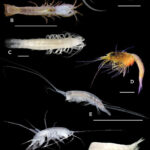
New distribution records of subterranean crustaceans from cenotes in Yucatan (Mexico).
Dorottya Angyal, Efraín M. Chávez-Solís, Luis A. Liévano-Beltrán, Benjamín Magaña, Nuno Simões, Maite Mascaró
12 de febrero de 2022
This study demonstrates the need for integrative/interdisciplinary approaches when conducting biodiversity assessments in complex and poorly studied aquifers. This first integrative evaluation (i.e., molecular, morphological, broad geographic and type locality sampling, and environmental data) of Yucatán Typhlatya reveals considerable species identity conflict in prior phylogenetic assessments, broad species ranges, syntopy within cave systems, and five genetic lineages.
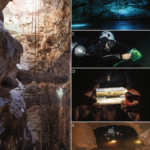
An integrative re‐evaluation of Typhlatya shrimp within the karst aquifer of the Yucatán Peninsula, Mexico
Lauren Ballou - David Brankovits - Efraín M. Chávez‐Solís - José M. Chávez Díaz - Brett C. Gonzalez - Shari Rohret - Alexa Salinas - Arielle Liu - Nuno Simões - Fernando Álvarez - Maria Pia Miglietta - Thomas M. Iliffe - Elizabeth Borda
29 de marzo de 2022
This study demonstrates the need for integrative/interdisciplinary approaches when conducting biodiversity assessments in complex and poorly studied aquifers. This first integrative evaluation (i.e., molecular, morphological, broad geographic and type locality sampling, and environmental data) of Yucatán Typhlatya reveals considerable species identity conflict in prior phylogenetic assessments, broad species ranges, syntopy within cave systems, and five genetic lineages.
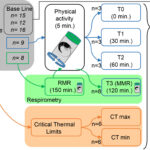
Physiological characterization of Typhlatya cave shrimps: linking habitat with aerobic metabolism
Efraín M. Chávez-Solís, Fernando Díaz, Kurt Paschke, Denise Re, Carlos Rosas, Gabriela Rodríguez-Fuentes, Nelly Tremblay y Maite Mascaró
29 de julio 2022
Here we describe physiological aspects of three of the most abundant and widespread Typhlatya species that thrive in the fresh and marine groundwater habitats of the anchialine ecosystem of the Yucatan Peninsula.
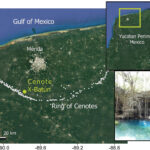
Benthic species assemblages change through a freshwater cavern-type cenote in the Yucatán Peninsula, Mexico
Dorottya Angyal, Sergio Cohuo , José Manuel Castro-Pérez, Maite Mascaró, Carlos Rosas
11 de agosto 2022
We studied benthic assemblages through X-Batún, a continental freshwater cenote and its associated submerged cave located in San Antonio Mulix (Yucatán, Mexico). Using cave diving techniques, we collected sediment samples at four zones of the system. We extracted and counted individuals of benthic species in three replicates of 5 grams of wet sediment at each site. The biological composition was integrated by 15 species from eight higher taxonomic groups. Non-metric multidimensional scaling distinguished four assemblages that coincided with surface, open water, cavern and cave zones. ANOSIM test revealed significant differences between the assemblages. In the deeper zones of the cenote characterized by twilight and total darkness, Ostracoda and Gastropoda show the highest diversity and abundance, with practical absence in surface sediments. This pattern may suggest ecological interactions with chemosynthetic bacterial activity. Surface shows an assemblage typical of epigean environments. Environmental variables along the cenote varied little from the upper layers to bottom. Linear correlation and detrended canonical analysis revealed that light is the main driver of benthic species assemblages. Temperature, pH, and dissolved oxygen exert higher influence at individual biological benthic assemblage in X-Batún.
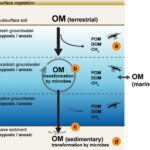
Editorial: The effects of environmental change on anchialine ecosystems
Mejía-Ortíz, Luis M, Chávez-Solís, Efraín M, Brankovits, David
14 de septiembre de 2022
This Research Topic was established with the aim to bring together the most recent outcomes and advances from a variety of scientific disciplines that link spatial and temporal changes in the environment to biogeochemical, ecological, and physiological changes at different biological scales in anchialine ecosystems, from microbes and macrofauna to habitat level. We have received contributions from disciplines spanning paleoecology, microbiology, biogeochemistry, and ecophysiology from four geographical regions around the world (Australia, Bermuda, The Bahamas, and the Yucatan Peninsula). Specifically, these studies aimed at characterizing the limits of physiological adaptations of cave-adapted crustaceans, the drivers of organic matter inputs over time, and how organic matter availability regulates microbial community structure and meiofauna assemblages. These contributions expand our understanding of anchialine ecosystem functioning and enable better predictions of future ecological changes within these coastal aquifer habitats.

Subterranean Waters of Yucatán Peninsula, Mexico RevealEpigean Species Dominance and Intraspecific Variability inFreshwater Ostracodes (Crustacea: Ostracoda)
Laura Macario-González - Sergio Cohuo - Dorottya Angyal - Liseth Pérez - Maite Mascaró
24 de enero de 2021
In order to gain insights into the biological evolution of the subterranean environments of the Yucatan Peninsula, we evaluated the ostracode species composition of caves and cenotes in five independent sampling campaigns (2008, 2013, 2017–2019).
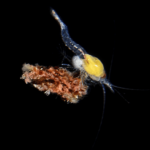
Updated Distribution of the Mysid Antromysis cenotensis (Crustacea: Peracarida), a Protected Key Species in Yucatan Peninsula Cenotes
Luis Arturo Liévano-Beltrán - Nuno Simões
31 de marzo de 2021
We present 52 new geographic location records for the peracarid crustacean Antromysis cenotensis Creaser, 1936, endemic in cenotes of the Yucatan Peninsula, Mexico. This species is currently considered threatened and, therefore, is protected by Mexican law.

A new locality and phylogeny of the stygobitic Typhlatya shrimps for the Yucatan Peninsula
Luis Espinasa - Efraín M. Chávez Solís - Maite Mascaró - Carlos Rosas - Nuno Simoes - Gregory Violette
12 febrero de 2020
Typhlatya is a genus of small, stygobitic shrimp in the family Atyidae. Species in this genus are found in subterranean anchialine habitats, and they span salt, brackish and fresh waters. None have been reported in the open sea (Botello et al. 2013).
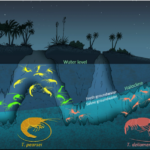
Distribution patterns, carbon sources and niche partitioning in cave shrimps (Atyidae: Typhlatya)
Efráin Chávez-Solís, Corina Solís, Nuno Simôes, Maire Mascaró
30 de julio de 2020
Cave shrimps of the Typhlatya genus are common and widespread in fresh, brackish and marine groundwater throughout the Yucatan Peninsula (Mexico). These species are ideal models to test niche partitioning within sympatric species in oligotrophic systems.
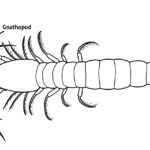
Uptaded checklist, historical overview and illustrated guide to the stygobiont Malacostraca (Arthropoda: Crustacea) species of Yucatan (Mexico)
Dorottya Angyal - Nuno Simoes - Maite Mascaró
30 de noviembre de 2020
This study provides an updated checklist and an illustrated guide to the 17 currently known stygobiont Malacostraca species of the state of Yucatan (Yucatan Peninsula, Mexico)
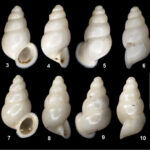
First record of subterranean freshwater gastropods (Mollusca, Gastropoda, Cochliopidae) from the cenotes of Yucatán state
Jozef Grego - Dorottya Angyal - Luis Arturo Liévano Beltrán
18 de febrero de 2019
The biospeleological investigations of several cenotes in the eastern region of Yucatán state, Mexico, during January 2018 yielded, among other invertebrates, two new truncatelloid gastropod species described here in as Mexicenotica xochii gen. n. et sp. n. and Pyrgophorus thompsoni sp. n. Both species represent the first record of stygobiont gastropod species from the cenotes of Yucatán indicating the high biodiversity potential of the studied area.
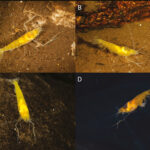
Predatory behavior of the cave shrimp Creaseria morleyi (Creaser, 1936) (Caridea: Palaemonidae), the blind hunter of the Yucatán cenotes, Mexico
Efraín M. Chávez-Solís - Luis M. Mejía-Ortíz - Nuno Simões
7 de enero de 2018
The predatory behavior of C. morleyi is here described for the first time, verifying its classification as a predator. A variety of prey targets, including the atyid shrimp Typhlatya sp., were used to demonstrate predation and saprophagous feeding behavior in C. morleyi using in vitro and in situ observations.
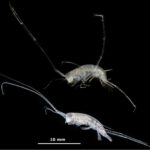
Mayaweckelia troglomorpha, a new subterranean amphipod species from Yucatán state, México (Amphipoda, Hadziidae)
Dorottya Angyal - Efraín Chávez Solís - Benjamín Magaña - Gergely Balázs - Nuno Simoes
6 de febrero de 2018
A detailed description of a new stygobiont species of the amphipod family Hadziidae, Mayaweckelia troglomorpha Angyal, sp. n. is given, based on material collected in four cenotes of Yucatán federal state, México.
- 2025
-

Exploring the microbial communities in coastal cenote and their hidden biotechnological potential
Perla A. Contreras-de la Rosa, Susana De la Torre-Zavala, Aileen O´Connor-Sánchez, Alejandra Prieto-Davó and Elsa B. Góngora-Castillo
03 Abril 2025
Bacterial secondary metabolites are crucial bioactive compounds with significant therapeutic potential, playing key roles in ecological processes and the discovery of novel antimicrobial agents and natural products. Cenotes, as extreme environments, harbour untapped microbial diversity and hold an interesting potential as sources of novel secondary metabolites. While research has focused on the fauna and flora of cenotes, the study of their microbial communities and their biosynthetic capabilities remains limited. Advances in metagenomics and genome sequencing have greatly improved the capacity to explore these communities and their metabolites. In this study, we analysed the microbial diversity and biotechnological potential of micro-organisms inhabiting sediments from a coastal cenote. Metagenomic analyses revealed a rich diversity of bacterial and archaeal communities, containing several novel biosynthetic gene clusters (BGCs) linked to secondary metabolite production. Notably, polyketide synthase BGCs, including those encoding ladderanes and aryl-polyenes, were identified. Bioinformatics analyses of these pathways suggest the presence of compounds with potential industrial and pharmaceutical applications. These findings highlight the biotechnological value of cenotes as reservoirs of secondary metabolites. The study and conservation of these ecosystems are essential to facilitate the discovery of new bioactive compounds that could benefit various industries.
- 2024
-

Biosynthetic potential of the sediment microbial subcommunities of an unexplored karst ecosystem and its ecological implications
Pablo Suárez-Moo, Alejandra Prieto-Davó
Abril 2024
Microbial communities from various environments have been studied in the quest for new natural products with a broad range of applications in medicine and biotechnology. We employed an enrichment method and genome mining tools to examine the biosynthetic potential of microbial communities in the sediments of a coastal sinkhole within the karst ecosystem of the Yucatán Peninsula, Mexico. Our investigation led to the detection of 203 biosynthetic gene clusters (BGCs) and 55 secondary metabolites (SMs) within 35 high-quality metagenome-assembled genomes (MAGs) derived from these subcommunities. The most abundant types of BGCs were Terpene, Nonribosomal peptide-synthetase, and Type III polyketide synthase. Some of the in silico identified BGCs and SMs have been previously reported to exhibit biological activities against pathogenic bacteria and fungi. Others could play significant roles in the sinkhole ecosystem, such as iron solubilization and osmotic stress protection. Interestingly, 75% of the BGCs showed no sequence homology with bacterial BGCs previously reported in the MiBIG database. This suggests that the microbial communities in this environment could be an untapped source of genes encoding novel specialized compounds. The majority of the BGCs were identified in pathways found in the genus Virgibacillus, followed by Sporosarcina, Siminovitchia, Rhodococcus, and Halomonas. The latter, along with Paraclostridium and Lysinibacillus, had the highest number of identified BGC types. This study offers fresh insights into the potential ecological role of SMs from sediment microbial communities in an unexplored environment, underscoring their value as a source of novel natural products.

Diversity and Bioprospection of Gram-positive Bacteria Derived from a Mayan Sinkhole
Julian L. Wissner, José Carlos Parada-Fabián, Norma Angélica Márquez-Velázquez, Wendy Escobedo-Hinojosa, Susana P. Gaudêncio & Alejandra Prieto-Davó
29 Mayo 2024
Water-filled sinkholes known locally as cenotes, found on the Yucatán Peninsula, have remarkable biodiversity. The primary objective of this study was to explore the biotechnological potential of Gram-positive cultivable bacteria obtained from sediment samples collected at the coastal cenote Pol-Ac in Yucatán, Mexico. Specifically, the investigation aimed to assess production of hydrolytic enzymes and antimicrobial compounds. 16 S rRNA gene sequencing led to the identification of 49 Gram-positive bacterial isolates belonging to the phyla Bacillota (n = 29) and Actinomycetota (n = 20) divided into the common genera Bacillus and Streptomyces, as well as the genera Virgibacillus, Halobacillus, Metabacillus, Solibacillus, Neobacillus, Rossellomorea, Nocardiopsis and Corynebacterium. With growth at 55ºC, 21 of the 49 strains were classified as moderately thermotolerant. All strains were classified as halotolerant and 24 were dependent on marine water for growth. Screening for six extracellular hydrolytic enzymes revealed gelatinase, amylase, lipase, cellulase, protease and chitinase activities in 93.9%, 67.3%, 63.3%, 59.2%, 59.2% and 38.8%, of isolated strains, respectively. The genes for polyketide synthases type I, were detected in 24 of the strains. Of 18 strains that achieved > 25% inhibition of growth in the bacterial pathogen Staphylococcus aureus ATCC 6538, 4 also inhibited growth in Escherichia coli ATCC 35,218. Isolates Streptomyces sp. NCA_378 and Bacillus sp. NCA_374 demonstrated 50–75% growth inhibition against at least one of the two pathogens tested, along with significant enzymatic activity across all six extracellular enzymes. This is the first comprehensive report on the biotechnological potential of Gram-positive bacteria isolated from sediments in the cenotes of the Yucatán Peninsula.
- 2023
-

LINKING RADIOCARBON AND TROPHIC WEBS IN KARSTIC GROUNDWATER ECOSYSTEMS IN THE YUCATAN PENINSULA, MÉXICO
C Solís, E M Chávez-Solís, M Rodríguez-Ceja, C G Méndez-García, E Ortíz, C Canto, M A Martínez-Carrillo y M Mascaró
17 de enero 2023
Stable isotopes have been used historically to track food webs. Our approach used a combination of δ13C and radiocarbon (14C) dating to identify carbon sources in cave shrimp within caves of the Karstic Yucatan Peninsula, Mexico. Three sister species of stygobitic Typhlatya shrimps were collected from the cenote pool (cenote hereafter), cavern and cave hydro regions. New and previously reported 14C and δ13C values of whole tissues from the organisms were determined at the AMS laboratory (LEMA) of the Institute of Physics of the Universidad Nacional Autónoma de México. This new set of isotopic values of biomass and potential sources were incorporated into the Bayesian Mixing Modeling Software SIAR. In two hypothetical scenarios, the contribution from each feeding source among three species of the Typhlatya genus was determined. Slight differences were also observed between isotopic values of two groups of the same species collected in two distant cenote pools, suggesting this species may feed on a wider array of sources than previously found, and that the oligotrophic environment may have a strong influence on cave shrimp diet.

Morfología del aparato de alimentación de los camarones de cueva del género Typhlatya (Decapoda: Atyidae) de la península de Yucatán y comparación con especies epigeas
Ivonne Trejo-Ventura, Gema Armendáriz, José Luis Villalobos, Fernando Álvarez
24 de mayo 2023
A través de micrografías obtenidas del MEB se estudió el arreglo de las cerdas en el dactilo y propodio de los pereiópodos 1 y 2, definido aquí como el aparato de alimentación, de 3 especies de camarones de cueva del género Typhlatya (T. mitchelli, T. pearsei, T.dzilamensis) de la península de Yucatán. Las setas se clasificaron de acuerdo con su morfología y posición en el propodio y dactilo resultando 6 tipos principales. Las 3 especies de Typhlatya difirieron ligeramente en el número de cada tipo de seta y mostraron algunas variaciones morfológicas, especialmente en las setas centrales. Una comparación del arreglo setal de Typhlatya spp. con el de las especies epigeas Potimirim mexicana y P. glabra, mostró diferencias importantes generadas probablemente por la especialización a un determinado hábitat.

Use of Microbiological and Chemical Data to Evaluate the Effects of Tourism on Water Quality in Karstic Cenotes in Yucatan
Flor Arcega-Cabrera, Karina León-Aguirre, Fernando Enseñat-Soberanis, Germán Giácoman-Vallejos, Gabriela Rodríguez-Fuentes, Ismael Oceguera-Vargas, Elizabeth Lamas-Cosío & Nuno Simoes
23 de Junio 2023
Cenotes are spectacular karst formations in Yucatan, Mexico, often used for recreation. However, their impact on water quality has yet to be explored in detail. Therefore, during Easter, water samples were collected from four cenotes to identify variations in water quality associated with the presence of tourists. PCO of water quality, before (PH) and during Holy Week (HW) in 2019, explained 49.02% of the total variation. The indicators contributing to the first principal coordinate’s variation were Sr, K, sulfate, and chloride (0.89). Whereas, alkalinity, temperature, conductivity, nitrate, and ORP contributed to the second PC. PERMANOVA indicated a significant interaction between “cenote” and “condition” factors, and post hoc paired comparisons indicated significant differences between PH and HW conditions. Significant correlations varied among the four cenotes as the result of hydrogeological differences. Whereas, numbers of visitors were correlated with at least one fecal-matter indicator, demonstrating anthropogenic influence on the cenotes’ water quality.

Extravisual opsins in the blind shrimp Creaseria morleyi: presence and expression
José R. Pérez-Calderón, Jorge A. Pérez-León, Nuno Simões, Marisela Aguirre-Ramírez, Roxana E. Malpica-Calderón, Alejandro Botello
10 de Noviembre 2023
The presence of a long-wavelength sensitive (LWS) opsin gene was demonstrated in the stygobitic crustacean Creaseria morleyi (Creaser, 1936) by PCR readings from genomic DNA. In order to find the expression of this gene in extraocular tissue, shrimps were collected and placed in a tank to expose them to light/dark conditions for a period of 72 hours, and immediately after, sacrificed and sampled for RNA in the eyes, cephalothorax, abdomen, and sixth abdominal segment plus uropods. The transcripts of the LWS opsin gene were found in the eyes and abdomen of individuals exposed to light. The expression of these opsins could be involved in extravisual functions such as synchronization of their biological processes with environmental cycles related to diurnal vertical migration.
- 2022
-

New distribution records of subterranean crustaceans from cenotes in Yucatan (Mexico).
Dorottya Angyal, Efraín M. Chávez-Solís, Luis A. Liévano-Beltrán, Benjamín Magaña, Nuno Simões, Maite Mascaró
12 de febrero de 2022
This study demonstrates the need for integrative/interdisciplinary approaches when conducting biodiversity assessments in complex and poorly studied aquifers. This first integrative evaluation (i.e., molecular, morphological, broad geographic and type locality sampling, and environmental data) of Yucatán Typhlatya reveals considerable species identity conflict in prior phylogenetic assessments, broad species ranges, syntopy within cave systems, and five genetic lineages.

An integrative re‐evaluation of Typhlatya shrimp within the karst aquifer of the Yucatán Peninsula, Mexico
Lauren Ballou - David Brankovits - Efraín M. Chávez‐Solís - José M. Chávez Díaz - Brett C. Gonzalez - Shari Rohret - Alexa Salinas - Arielle Liu - Nuno Simões - Fernando Álvarez - Maria Pia Miglietta - Thomas M. Iliffe - Elizabeth Borda
29 de marzo de 2022
This study demonstrates the need for integrative/interdisciplinary approaches when conducting biodiversity assessments in complex and poorly studied aquifers. This first integrative evaluation (i.e., molecular, morphological, broad geographic and type locality sampling, and environmental data) of Yucatán Typhlatya reveals considerable species identity conflict in prior phylogenetic assessments, broad species ranges, syntopy within cave systems, and five genetic lineages.

Physiological characterization of Typhlatya cave shrimps: linking habitat with aerobic metabolism
Efraín M. Chávez-Solís, Fernando Díaz, Kurt Paschke, Denise Re, Carlos Rosas, Gabriela Rodríguez-Fuentes, Nelly Tremblay y Maite Mascaró
29 de julio 2022
Here we describe physiological aspects of three of the most abundant and widespread Typhlatya species that thrive in the fresh and marine groundwater habitats of the anchialine ecosystem of the Yucatan Peninsula.

Benthic species assemblages change through a freshwater cavern-type cenote in the Yucatán Peninsula, Mexico
Dorottya Angyal, Sergio Cohuo , José Manuel Castro-Pérez, Maite Mascaró, Carlos Rosas
11 de agosto 2022
We studied benthic assemblages through X-Batún, a continental freshwater cenote and its associated submerged cave located in San Antonio Mulix (Yucatán, Mexico). Using cave diving techniques, we collected sediment samples at four zones of the system. We extracted and counted individuals of benthic species in three replicates of 5 grams of wet sediment at each site. The biological composition was integrated by 15 species from eight higher taxonomic groups. Non-metric multidimensional scaling distinguished four assemblages that coincided with surface, open water, cavern and cave zones. ANOSIM test revealed significant differences between the assemblages. In the deeper zones of the cenote characterized by twilight and total darkness, Ostracoda and Gastropoda show the highest diversity and abundance, with practical absence in surface sediments. This pattern may suggest ecological interactions with chemosynthetic bacterial activity. Surface shows an assemblage typical of epigean environments. Environmental variables along the cenote varied little from the upper layers to bottom. Linear correlation and detrended canonical analysis revealed that light is the main driver of benthic species assemblages. Temperature, pH, and dissolved oxygen exert higher influence at individual biological benthic assemblage in X-Batún.

Editorial: The effects of environmental change on anchialine ecosystems
Mejía-Ortíz, Luis M, Chávez-Solís, Efraín M, Brankovits, David
14 de septiembre de 2022
This Research Topic was established with the aim to bring together the most recent outcomes and advances from a variety of scientific disciplines that link spatial and temporal changes in the environment to biogeochemical, ecological, and physiological changes at different biological scales in anchialine ecosystems, from microbes and macrofauna to habitat level. We have received contributions from disciplines spanning paleoecology, microbiology, biogeochemistry, and ecophysiology from four geographical regions around the world (Australia, Bermuda, The Bahamas, and the Yucatan Peninsula). Specifically, these studies aimed at characterizing the limits of physiological adaptations of cave-adapted crustaceans, the drivers of organic matter inputs over time, and how organic matter availability regulates microbial community structure and meiofauna assemblages. These contributions expand our understanding of anchialine ecosystem functioning and enable better predictions of future ecological changes within these coastal aquifer habitats.
- 2021
-

Subterranean Waters of Yucatán Peninsula, Mexico RevealEpigean Species Dominance and Intraspecific Variability inFreshwater Ostracodes (Crustacea: Ostracoda)
Laura Macario-González - Sergio Cohuo - Dorottya Angyal - Liseth Pérez - Maite Mascaró
24 de enero de 2021
In order to gain insights into the biological evolution of the subterranean environments of the Yucatan Peninsula, we evaluated the ostracode species composition of caves and cenotes in five independent sampling campaigns (2008, 2013, 2017–2019).

Updated Distribution of the Mysid Antromysis cenotensis (Crustacea: Peracarida), a Protected Key Species in Yucatan Peninsula Cenotes
Luis Arturo Liévano-Beltrán - Nuno Simões
31 de marzo de 2021
We present 52 new geographic location records for the peracarid crustacean Antromysis cenotensis Creaser, 1936, endemic in cenotes of the Yucatan Peninsula, Mexico. This species is currently considered threatened and, therefore, is protected by Mexican law.
- 2020
-

A new locality and phylogeny of the stygobitic Typhlatya shrimps for the Yucatan Peninsula
Luis Espinasa - Efraín M. Chávez Solís - Maite Mascaró - Carlos Rosas - Nuno Simoes - Gregory Violette
12 febrero de 2020
Typhlatya is a genus of small, stygobitic shrimp in the family Atyidae. Species in this genus are found in subterranean anchialine habitats, and they span salt, brackish and fresh waters. None have been reported in the open sea (Botello et al. 2013).

Distribution patterns, carbon sources and niche partitioning in cave shrimps (Atyidae: Typhlatya)
Efráin Chávez-Solís, Corina Solís, Nuno Simôes, Maire Mascaró
30 de julio de 2020
Cave shrimps of the Typhlatya genus are common and widespread in fresh, brackish and marine groundwater throughout the Yucatan Peninsula (Mexico). These species are ideal models to test niche partitioning within sympatric species in oligotrophic systems.

Uptaded checklist, historical overview and illustrated guide to the stygobiont Malacostraca (Arthropoda: Crustacea) species of Yucatan (Mexico)
Dorottya Angyal - Nuno Simoes - Maite Mascaró
30 de noviembre de 2020
This study provides an updated checklist and an illustrated guide to the 17 currently known stygobiont Malacostraca species of the state of Yucatan (Yucatan Peninsula, Mexico)
- 2019
-

First record of subterranean freshwater gastropods (Mollusca, Gastropoda, Cochliopidae) from the cenotes of Yucatán state
Jozef Grego - Dorottya Angyal - Luis Arturo Liévano Beltrán
18 de febrero de 2019
The biospeleological investigations of several cenotes in the eastern region of Yucatán state, Mexico, during January 2018 yielded, among other invertebrates, two new truncatelloid gastropod species described here in as Mexicenotica xochii gen. n. et sp. n. and Pyrgophorus thompsoni sp. n. Both species represent the first record of stygobiont gastropod species from the cenotes of Yucatán indicating the high biodiversity potential of the studied area.
- 2018
-

Predatory behavior of the cave shrimp Creaseria morleyi (Creaser, 1936) (Caridea: Palaemonidae), the blind hunter of the Yucatán cenotes, Mexico
Efraín M. Chávez-Solís - Luis M. Mejía-Ortíz - Nuno Simões
7 de enero de 2018
The predatory behavior of C. morleyi is here described for the first time, verifying its classification as a predator. A variety of prey targets, including the atyid shrimp Typhlatya sp., were used to demonstrate predation and saprophagous feeding behavior in C. morleyi using in vitro and in situ observations.

Mayaweckelia troglomorpha, a new subterranean amphipod species from Yucatán state, México (Amphipoda, Hadziidae)
Dorottya Angyal - Efraín Chávez Solís - Benjamín Magaña - Gergely Balázs - Nuno Simoes
6 de febrero de 2018
A detailed description of a new stygobiont species of the amphipod family Hadziidae, Mayaweckelia troglomorpha Angyal, sp. n. is given, based on material collected in four cenotes of Yucatán federal state, México.
